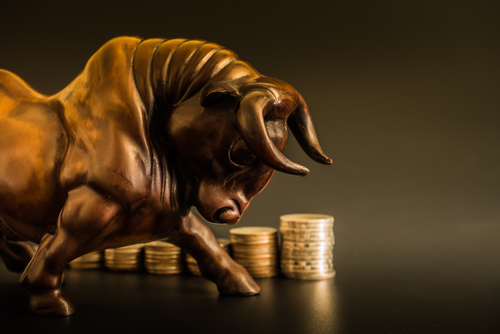A friend told me yesterday that he is deeply perplexed about stocks’ historic rally off the March 23 low.
“I don’t even understand why the market has done what it’s done,” he said. “How the heck am I supposed to know what it will do next?”
He can’t know what the market will do next, of course. No one can.
Tomorrow’s market action will be based on tomorrow’s news. And we can’t know that today.
Click here to view Alex’s latest video update.
Every serious investor should accept this reality and incorporate it into their investment approach.
To a great extent, uncertainty will forever be your inseparable companion. So get used to it.
However, we can certainly understand what the market has been doing lately and why… and draw reasonable conclusions about how to run our portfolios now.
The market crashed in the first quarter as investors realized that the coronavirus couldn’t be contained and the health and economic consequences would be entirely negative.
As the data poured in, however, investors began to realize that the threat had been overstated.
Remember when the “experts” at London’s Imperial College forecast that up to 2 million Americans would die from the coronavirus by this summer?
The actual death toll has been less than one-twentieth of that.
In fact, young people have figured out that with their healthier immune systems they are unlikely to even get seriously ill if they contract the disease.
As a result, many have thrown caution to the wind and created a greater risk for more vulnerable members of society, especially the elderly and those with preexisting conditions.
That is why some states are either delaying or rolling back their reopenings.
But medical professionals have honed their approaches to treating COVID-19. More patients are surviving the disease. The death rate is not rising nearly as rapidly as reported cases.
In addition, three drug companies – Moderna (Nasdaq: MRNA), Pfizer (NYSE: PFE), and Johnson & Johnson (NYSE: JNJ) – are entering or close to entering Phase 3 trials of their vaccines.
It’s a reasonable bet that at least one will be available for emergency authorization within a few months and widespread inoculation will begin early next year.
Herd immunity will eventually follow.
Stock market investors – who look forward not back – have incorporated this likelihood into share prices.
Hence the big bounce, further fueled by positive economic developments like a record rise in retail sales and nonfarm payrolls.
However, there are other reasons that stocks are flying that are less reassuring.
The first is microscopic interest rates.
High-grade bonds pay just a fraction of 1%. Cash pays practically nothing.
Since there is little competition for stocks, traditional non-equity investors are pouring money into the market in search of a return that will exceed inflation.
There are still trillions of dollars in cash on the sidelines, so this trend may well continue for several months, as Federal Reserve Chairman Jerome Powell has made it clear that the central bank has no inclination to take rates higher until at least 2022.
But if ground-scraping interest rates eventually caused investors to take the market to unsupportable levels, it would be a dangerous thing.
I’ll keep you posted here as this phenomenon plays out.
More worrying is increasing evidence that small and inexperienced investors are “playing the market,” day-trading penny stocks and hopping on any stock that is moving, often for a matter of hours or just minutes.
Investor euphoria like this is a danger signal.
The last time it happened was the late 1990s and early 2000s, when a sharp rise in technology shares led to unsustainable valuations and, ultimately, the popping of the internet bubble.
The subsequent bear market didn’t hit bottom until October 2002. (And the leading index of internet shares declined a breathtaking 94%.)
We are not in a bubble now, however, and the day-trading frenzy may fizzle out as these (mostly young) gamblers return to their usual playground: online sports betting.
But it is a reminder to stay vigilant, asset allocate – by diversifying your portfolio outside the stock market – and run trailing stops behind your individual stock positions.
This allows you to participate in the market’s upside while keeping your downside risk strictly limited.
Good investing,
Alex

